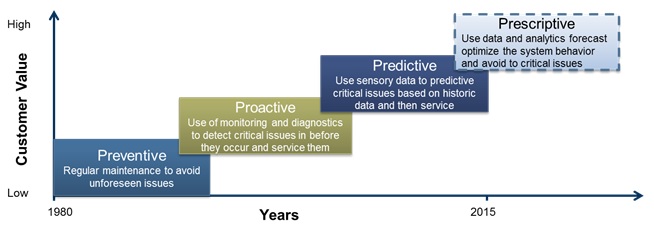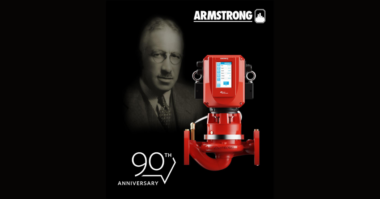Frost & Sullivan Industry Manager Anand MG
The pumps market currently has been experiencing a difficult phase, with dwindling investments in new projects and existing projects getting deferred or cancelled. End users are hesitant to invest in greenfield projects and the common trend is to focus on maintenance of existing assets in the plant. Digital transformation is driving the advent and convergence of IoT within the pump industry and it is changing the face of the pumps market entirely, wherein, technologies such as equipment monitoring and predictive analysis are eliminating challenges such as unplanned downtime and high unpredictable maintenance costs. There are several factors driving this change:
- Convergence of Industry Forces
A range of factors are driving industry change, and four common trends that are impacting organizations are: the emergence of global new, disruptive competitors; graying workforce; proliferation of smart devices; and the new business models disrupting traditional industries. In many cases, sensorization, the advent of cloud computing and increasing connectivity has significantly contributed to the advancement of these trends, leading to it being seen as an enabler of industry transformation. As a result, we are living in an age of unprecedented industry change, as every industry is undergoing rapid, and often unpredictable, transformation. This accelerating rate of industry disruption is driving companies to adapt far more quickly to the changing business environment in order to survive.
- Emergence of Digital Transformation
The convergence of three undeniable trends – Aging systems coupled with aging workforce, and skills deficit are challenging the manufacturing community to adopt a patch work of gateways and point solutions; Global volatility and margin pressures continue to drive the need for integrating the extended enterprise (beyond the four walls of the plant-floor), accelerating IoIT (Internet of Industrial Things) and analytics; and Exponential increase in operational data, as the organizations try to realize the value of stranded data by integrating various solutions. Organizations are accelerating towards the vision of the totally integrated digital enterprise. Early movers, who prepare for this changing tide, will make the market.
- Explosion in Connected Devices
The cost of sensors and IC chips has been waning for several decades. Growth and proliferation of wireless cellular communication technology has enabled companies to sensorize the equipment, connect it to the cloud and transform simple equipment to smart devices. As end-users interact with several smart devices in the personal and professional part of their life, they expect every device to be smart and connected. This forces pumps manufacturers to provide smart solutions that capitalizes on the existing connected infrastructure to provide rich experience to the end-users.
- Evolution of Service Models
While preventive maintenance is the default service model, the cost of unnecessary operational expense (OPEX) is shifting end-users towards proactive maintenance model. But the lack of skilled workforce and inability to interpret the data points, is forcing more and more end-users to adopt predictive and prescriptive analytical solution. Pump manufacturers have traditionally left servicing aspect to the distributor. As device complexity increases and distributors lose existing workforce as they retire, pump manufacturers need to step-up and provide such solutions, or risk losing business to new entrants with innovative business models.
While Digital Transformation and IoT are hailed as some of the biggest technology disruption, there are few potential obstacles.
- Fragmented Vendor Landscape
Several moving parts come together to create holistic experience for the end-users. While there are smart pumps, they fall short in several fronts. Integration of multiple systems is still an gray area and often end-users are left to use system integrators to develop the complete system. Even then, the incompact ability of various systems leaves much to be deserved. End-users prefer companies take up responsibilities and delivered a unified solution. An excellent example of integrated system is the Apple’s ecosystem. Apple owns the software (operating system iOS), hardware (iPhone), app store and iTunes but Apple does not manufacture the phone, nor does it develop the apps or make the music sold in its store. This unified approach to delivery, even though it does not manufacture or make the content, provides rich experience to the end-users. Pump manufacturers need to ascent to a platform innovator wherein they integrate several systems (sensors, software and analytics in cloud) and provide unified experience to the end-users.
- Risk of Cyber Security
Increased connectivity and raising number of security threats are key concerns for end-users. Data piracy and industrial espionage has been rising. For equipment manufacturers, security is always an after. As a result, end-users are concerned about connecting their equipment to the internet. Given that manufacturers prefer to put the logic in the cloud rather than develop complex hardware with sophisticated inbuilt logic, there is a hindrance in adoption of such technologies. End-users prefer to partner with excellent service providers who can demonstrate the robustness of security system and alleviate data piracy concerns rather than work with original equipment manufacturers (OEM). Pump manufacturers are faced with the chicken and egg problem. End-users do not demand additional service solutions due to the piracy and security concern, and pump manufacturers do not invest in upgrading their solutions as there is no demand. As noted previous, pump manufacturers’ inability to address these helping new entrants capitalize on the growing demand for analytical solutions.
- Lack of Clear Return on Investment (RoI)
For many end-users IoT requires a significant investment. Infrastructural challenges in collecting, sorting and storing volumes of data and making it available real time is a major hurdle. On top of this, there are several technologies and solution providers in the market each with its own set of advantages and disadvantages. With this wide variety of choices, there is no one correct answer. As a result, there is a lack of clear RoI and this is forcing end-users to adopt a wait and watch approach.
- Resource Crunch
While there is lot of hype around these technologies, the market is characterized by lack of talent to interpret large volumes data and derive business implications. There is only a small pool of proven IoT leaders with wide experience to lead the digital transformation for a large organization. This limits the speed with which end-users can move forward.
In the rapidly transforming market, pump companies are uncertain how to create a competitive position in the new environment. Not every company needs to embark on a digital transformation journey, but doing so can generate enormous value for the company and its end-user. Few pointers for pump companies trying to achieve an optimal IoT strategy:
- Focus on solving end-user challenges: Instead of focusing on providing flow solutions, pump manufacturers need to offer flow process management.
- Sum of parts is greater than the whole: The smart pump system – a combination of pumps, sensors, and analytical software will be the key for operational excellence. Pump manufacturers cannot focus only on pump hardware but also need to focus on sensors and software, as overall system performance is important.
- Act fast, fail faster: As the product development takes 3 years, pump manufacturers need to act now to develop and deliver a compelling pump analytics solutions.
- Stand out in a crowded market: There are a wide variety of companies in the market (pump supplier, seal supplier, motor supplier, automation vendors, ICT companies) and each prophesizes that their solution is the best.
Conclusion
IoT is fast penetrating the pump industry wherein, use of connected sensors to monitor energy consumption in manufacturing is helping in controlling costs and energy compliance. While IoT’s proliferation is driven by technologies such as pervasive sensing, seamless connectivity and distributing computing, the key mantra of success is the ability to develop unique and differentiated IoT solution finely tailored to solve end-users’ challenges. Especially in industrial IoT, where ICT giants, tech startups, and industrial incumbents are each vying for a piece of the action, a company’s ability to deliver value and provide enriching customer experience is the cornerstone of success.





Comments